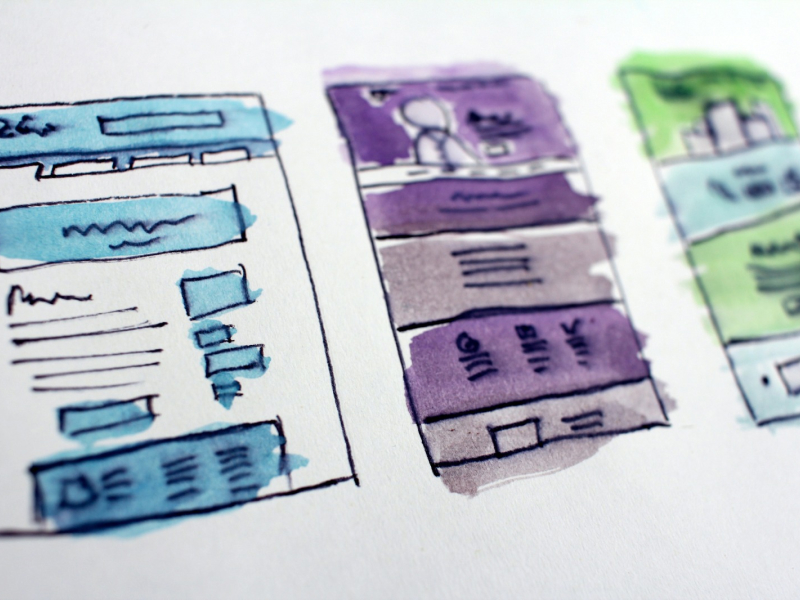User interface (UI) and user experience (UX) are major factors in the building and improvement of digital products and services. To understand their importance, it is necessary to examine their origins and recognize their inherent connection in shaping engaging digital experiences.
History of UI and UX
The 20th century milestones: The 20th century witnessed significant milestones in the development of UI and UX. The emergence of the first computer interfaces in the 1960s represented the inception of digital interaction. These early interfaces were text-based and catered primarily to researchers and engineers.
The introduction of GUIs: The introduction of graphical user interfaces (GUIs) in the 1970s, notably with Xerox PARC’s Alto computer brought a huge change to UI. Featuring elements like windows, icons, and the mouse, GUIs made computers more accessible to the general public, forming the foundation of contemporary UI design.
The rise of the internet: The 1990s saw the internet’s rapid expansion, giving birth to a lot of websites and online platforms. Web designers grappled with issues of navigation and user engagement, fostering the early principles of UX. Pioneering websites such as Amazon and Yahoo! established almost universal standards for user-centric design and intuitive navigation.
The iPhone revolution: The launch of Apple’s iPhone in 2007 marked a big milestone in UI design. This transformative device popularized touch interfaces and minimalist design, reshaping how users interacted with digital products and fostering an “app culture” centered on intuitive gestures and visual aesthetics.
Definitions and terminology
To build a full understanding, a comprehensive knowledge of key terms and concepts in UI and UX is crucial.
Accessibility: Accessibility means that digital products are usable by individuals with disabilities, with features like screen readers and keyboard navigation.
Affordance: Affordance pertains to the perceived functionality of an object based on its design. It means making buttons and interactive elements appear clickable and usable.
Fidelity: Fidelity refers to the level of detail and realism in design prototypes. High fidelity implies a design that closely mirrors the final product.
Human-centered design: Human-centered design prioritizes user needs and experiences throughout the design process, showing empathy and comprehension.
Information architecture: Information architecture focuses on organizing and structuring content within a digital product to facilitate user navigation.
Interaction design: Interaction design refers to creating meaningful and engaging interactions between users and digital products.
Relationship between UI and UX
The relationship between UI and UX is mutually reinforcing and contributes to exceptional digital experiences.
UI serves as the visual manifestation of the UX vision, translating abstract concepts into concrete design elements like buttons, menus, and aesthetics. While UI principles are subjective, focusing on aesthetics and branding, they play an important role in conveying the overall user experience.
UI and UX principles have clearly distinct focuses, with UI leaning towards subjectivity and UX emphasizing objectivity. UI design’s subjectivity often hinges on aesthetics, which vary among individuals. Whereas UX principles are based around user satisfaction and accessibility, factors objectively evaluated through user testing and feedback.
To develop successful digital products, a symbiotic integration of UI and UX is needed. An aesthetically appealing UI may attract users initially, but it is the UX that retains their engagement and satisfaction. An interface that combines visual appeal with a positive user experience leads to user retention and potentially increases user to user recommendations.
Key differences between UI and UX
Understanding the distinctions between UI and UX is essential yet simple for product developers.
UI (User Interface): UI primarily deals with tangible elements, including layout, color schemes, typography, and visual design. Its primary goal is to create an aesthetically appealing and intuitive interface for users.
UX (User Experience): UX encompasses the overall user experience while interacting with a product or service. It considers emotions, perceptions, and user responses, aiming to meet user needs and ensure satisfaction. UX design focuses on making products enjoyable, efficient, and effective.
The importance of user-centered design: Both UI and UX display the significance of comprehending user needs and preferences. User personas, formed through extensive research, help with informed decision-making regarding product features, layout, and aesthetics. Regular user feedback further fine-tunes the design process, aligning the final product with user expectations.





